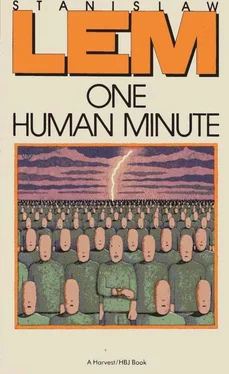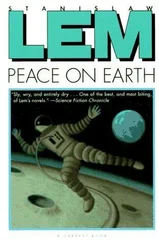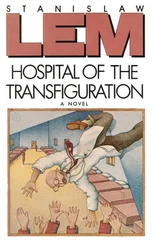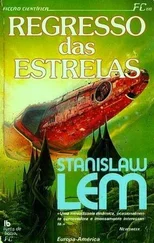Since humanity numbers nearly five billion, it stands to reason that thousands die every minute. No revelation, that. Nevertheless, our narrow comprehension bumps into the figures here as if into a wall. This is easy to see, because the words “simultaneously nineteen thousand people die” carry not one iota more emotional weight than the knowledge that nine hundred thousand are dying. Be it a million, be it ten million, the reaction will always be the same: a slightly frightened and vaguely alarmed “Oh.” We now find ourselves in a wilderness of abstract expressions; they mean something, but that meaning cannot be perceived, felt, experienced in the same way as the news of an uncle’s heart attack. Learning of the Uncle’s heart attack produces a greater impression on us.
But this chapter ushers you into dying for forty-eight pages. First come the data summaries, then the breakdown into specifics. In this way, you look first at the whole subject of death as through the weak lens of a microscope, then you examine sections in ever-increasing closeness as if using stronger and stronger lenses. First come natural deaths, in one category, then those caused by other people, in a separate category, then accidental deaths, acts of God, and so on. You learn how many people die per minute from police torture, and how many at the hands of those without government authorization; what the normal curve of tortures is over sixty seconds and their geographic distribution; what instruments are used in this unit of time, again with a breakdown into parts of the world and then by nation. You learn that when you take your dog for a walk, or while you are looking for your slippers, talking to your wife, falling asleep, or reading the paper, a thousand other people are howling and twisting in agony every consecutive minute of every twenty-four hours, day and night, every week, month, and year. You will not hear their cries but you will now know that it is continual, because the statistics prove it. You learn how many people die per minute by error, drinking poison instead of a harmless beverage. Again, the statistics take into account every type of poisoning: weedkillers, acids, bases — and also how many deaths are the result of mistakes by drivers, doctors, mothers, nurses, and so on. How many newborns — a separate heading — are killed by their mothers just after birth, either on purpose or through carelessness: some infants are suffocated by a pillow; others fall into a privy hole, as when a mother, feeling pressure, thought it was a bowel movement, either through inexperience or mental retardation or because she was under the influence of drugs when the labor began; and each of these variants has further breakdowns. On the next page are newborns who die through no one’s fault because they are monsters incapable of surviving, or because they are strangled by the umbilical cord, or because they fall victim to placenta previa or some other abnormality; again, I am not mentioning everything. Suicides take up a lot of space. Today there are far more ways of depriving oneself of life than in the past, and hanging has fallen to sixth place in the statistics. Moreover, the frequency-distribution table for new methods of suicide indicates that there has been an increase in methods since best-selling manuals have come out with instructions on making death swift and certain — unless someone wants to go slowly, which also happens. You can even learn, patient reader, what the correlation is between the size of the editions of these how-to suicide books and the normal curve of successful suicides. In the old days, when people were amateurs at it, more suicide attempts could be foiled.
Next, obviously, come deaths from cancer, from heart attacks, from the science of medicine, from the four hundred most important diseases; then come accidents, such as automobile collisions, death from falling trees, walls, bricks, from being run over by a train, from meteors even. Whether it is comforting to know that casualties from falling meteors are rare, I am not sure. As far as I can remember, 0.0000001 person per minute dies that way. Obviously, the Johnsons did solid work. In order to present the scope of death more accurately, they applied the so-called cross-reference, or diagonal method. Some tables will tell you from what group of causes people die; others, in what ways they die from a single cause — for example, electric shock. This method brings into relief the extraordinary wealth of our deaths. Death occurs most frequently from contact with an improperly grounded appliance, less often in the tub, and least often while urinating off a pedestrian bridge onto high-tension wires, this being only a fractional number per minute. In a footnote the conscientious Johnsons inform us that it is impossible to separate those who are killed deliberately by electric shock while under torture from those killed inadvertently when a little too much current is used.
There are also statistics on the means by which the living dispose of the dead, from funerals with cosmetic corpses, choirs, flowers, and religious pomp, to simpler and cheaper methods. We have many headings here, because, as it turns out, in the highly civilized countries more corpses are stuffed into bags with a stone — or cemented by their feet into old buckets, or cut up naked into pieces — and thrown into clay pits and lakes than in the Third World countries; more, too (another heading), are wrapped up in old newspapers or bloody rags and left in garbage dumps. The less well off are unacquainted with some of the ways of disposing of remains. Obviously, the information has yet to reach them, along with financial aid from the developed nations.
On the other hand, in poor countries more newborns are eaten by rats. These data appear on another page, but the reader will find a footnote directing him to the place, lest he miss them. And if he wants to take the book in small doses, he will find everything in the alphabetical index.
One cannot maintain for long that these are dry, boring figures that say nothing. One begins to wonder morbidly how many other ways people are dying every minute one reads, and the fingers turning the pages become moist. It is sweat, of course; it can hardly be blood.
Death by starvation (there had to be a separate table for it, with a breakdown by age; most who starve to death are children) carries a footnote telling us that it is only valid for the year of publication, since the numbers increase rapidly and in arithmetical progression. Death from overeating happens, too, of course, but is 119,000 times rarer. These data contain an element of exhibitionism and an element of blackmail.
I intended only to glance at this chapter, but then read as if compelled, like someone who peels the bandage off his bleeding wound to look, or who probes the cavity in his aching tooth with a toothpick: it hurts, but it is hard to stop. The figures are like a tasteless, odorless drug that seeps into the brain. And yet I have not mentioned — and have no intention of listing — the data on marasmus, senility, lameness, degeneration of organs, for then I would be quoting the book, whereas my task is only to review it.
Actually, the columns of figures arranged in tabular form for all types of deaths — those bodies of children, old people, women, and newborns of all nations and races, bodies present in spirit behind the numbers — are not the most sensational part of the book. Having written that sentence, I ask myself if I am being honest, and I repeat: no, they are not the most sensational. The enormity of all this human dying is a little like one’s own death: it is anticipated, but only generally and vaguely, the way we comprehend the inevitability of our own end, though we do not know the form that it will take.
The real immensity of flesh-and-blood life manifests itself on the very first page. The facts are indisputable. One might indeed entertain doubts about the accuracy of the data in the chapter on dying: they are based on averages, after all, and it is hard to believe that the taxonomy and etiology of the deaths were rendered with complete exactitude. But the honest authors do not conceal from us the possible statistical deviations. Their Introduction thoroughly describes the methods of calculation and even includes references to the computer programs employed. Though the methods allow for standard deviations, the latter have no importance for the reader — what difference does it really make if 7,800 newborns die per minute or 8,100? Besides, these deviations are insignificant because they tend to cancel one another out. The number of births is indeed not uniform for all times of the year and day; but since on Earth all times of the day, night, and year simultaneously coexist, the sum of stillbirths remains constant. Some columns, however, contain data arrived at by indirect inference. For example, neither the police nor private murderers — whether professional or amateur (not counting the ideological variety) — publish statistics on the effectiveness of their work. The error in magnitude here can be considerable.
Читать дальше












